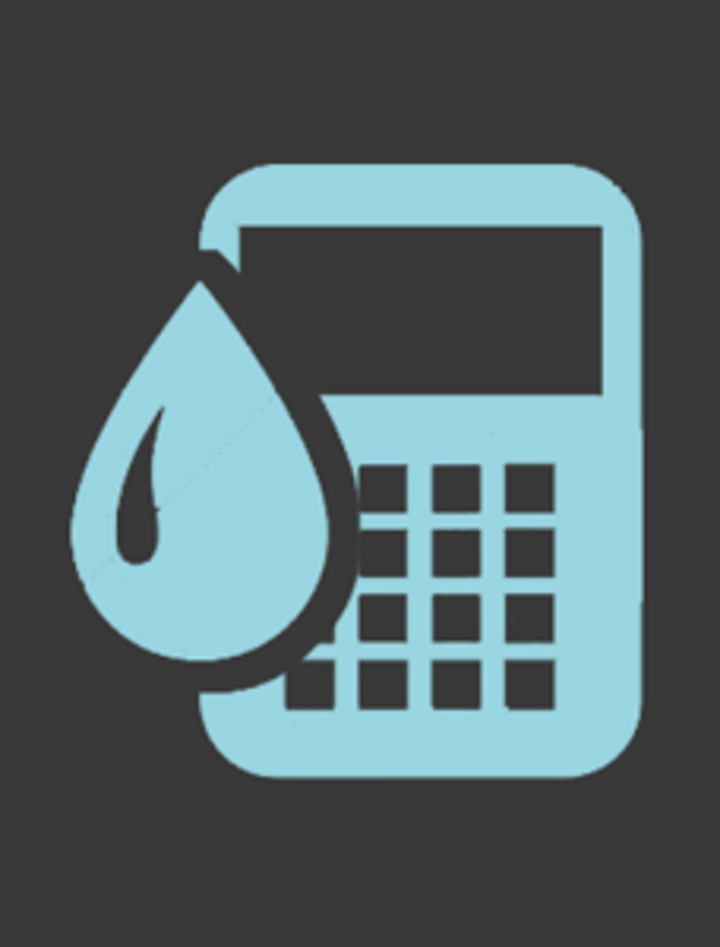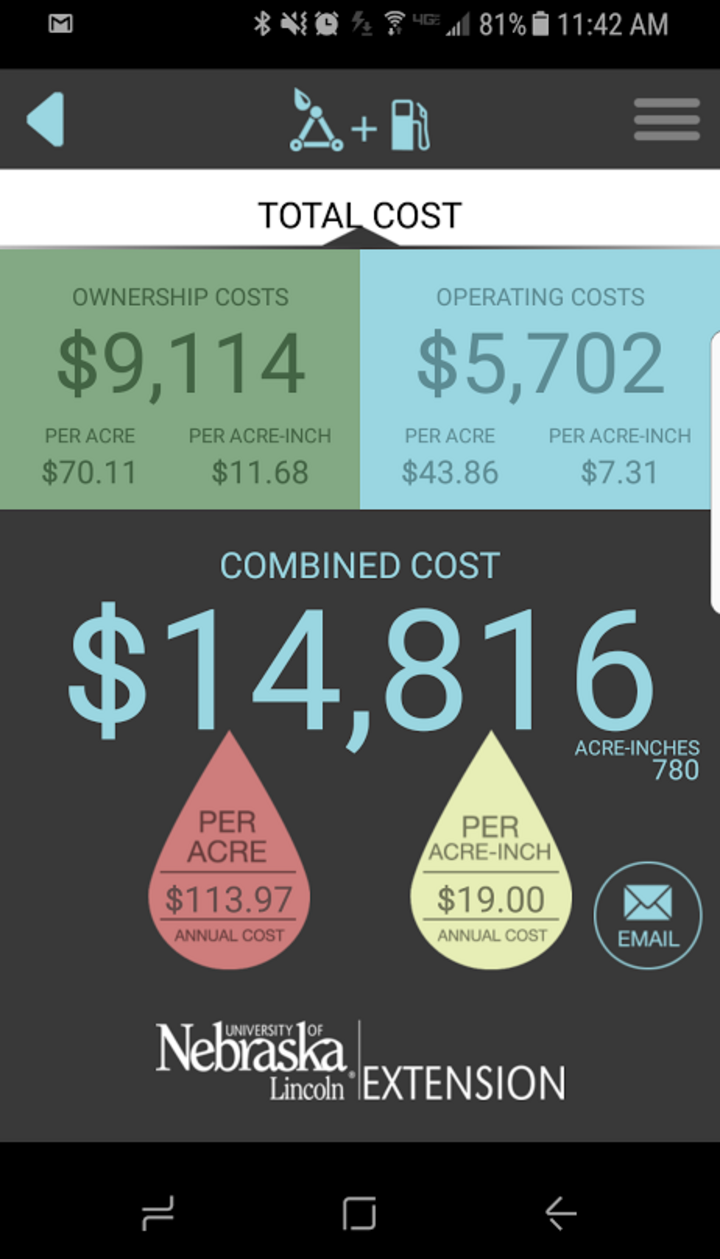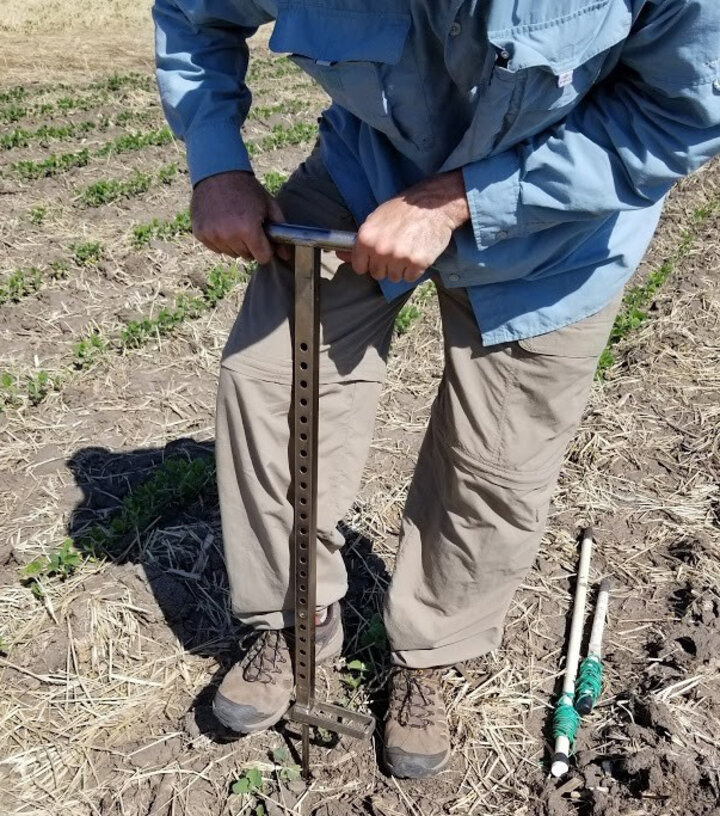With planting wrapping up across the state, now is an excellent time to turn attention to soil water sensor and ETgage installations if you haven’t already. Timely installation is important to gain the true benefits of sensors, leading to
- reduced irrigation costs,
- reduced chances of overwatering leading to anaerobic soil conditions, and
- less nutrient leaching.
Benefits from Using Sensors
One of the main benefits of using sensors to better manage irrigation is the reduced costs of pumping. When surveyed, sensor users from the Nebraska Ag Water Management Network and industry have indicated water savings of 2 inches per acre.
The cost of applying an additional 2 inches of water is going to vary depending on your depth to water, system pressure, and equipment costs, but could easily run from $10 to $30 per acre. To determine the actual cost, we would recommend using the IrrigateCost app, developed by Nebraska Extension.
The app, which is available for both Apple and Android products, allows users to input their specific information such as acres irrigated, pumping lift, system PSI, pump and pivot life, and inches applied as well as related costs such as for the well and engine, labor, energy, district fees, and taxes. The app then calculates total irrigation, total ownership, and total operating costs. It also breaks down costs by irrigation well, pump, gear head, pump base, diesel engine and tank and system and calculates per acre annual cost and per acre-inch annual cost.
IrrigateCost App
Available free from:
-
Apple iTunes Store for iPod and iPad at
https://itunes.apple.com/us/app/agriculture-irrigation-costs/id700329336?mt=8 -
Google App Store for Android at https://play.google.com/store/apps/details?id=com.movecreative.irrigatecost

In addition to reducing pumping costs, when properly used to manage irrigation, sensors also may improve crop growth and yield by helping to avoid the detrimental effects of overwatering on soil conditions and nutrient leaching. As shown in NebGuide G1904 Plant Growth and Yield as Affected by Wet Soil Conditions Due to Flooding or Over-Irrigation, over irrigation of a Hastings silt-loam soil at the South Central Agricultural Laboratory near Clay Center reduced yields by 8 to 15 bushels per acre.
Example Savings from Using Sensors for an Irrigation System
To illustrate the potential savings from using sensors, let’s use an example irrigation system irrigating 130 acres with a pumping lift of 150 feet, a system pressure of 45 psi, and diesel fuel at $2.00 per gallon.
When we plug these numbers into the IrrigateCost app, we end up with operating costs of $7.31 per inch of water applied and ownership costs of $8.76 per inch, assuming an average application of 8 inches per year. Total cost would be $16.07 per inch of water applied per acre. Therefore, the 8 inches of water applied during the year would result in a total annual cost of $128.58 per acre (Figure 1).
If using sensors resulted in saving 2 inches of water, the same operating costs of $7.31 per acre would apply, but ownership costs would change to $11.68 per inch since we are spreading the costs over fewer inches of water. The total cost would be $19.00 per acre inch per acre. Over the course of a year, this would result in a total annual cost of $113.97 per acre (Figure 2).
The difference in cost between the two scenarios is $14.61 per acre. With 130 acres irrigated the total annual savings from using sensors would be $1,899.30. From this total we would have to subtract the cost of the sensors. A typical range for sensor prices is as low as $175 for systems with NRD cost share up to $1,500 per year for subscription-based services. Therefore, the net savings from using sensors for a 130-acre center pivot could range from $400 to $1,700 per year.


Soil Sensor Installation Tips
While other tasks may seem more pressing, early installation of sensors is critical to ensure their proper operation during the later critical growth phases. Early installation helps to
- minimize root damage,
- allows time for sensors to acclimate to read actual soil water conditions instead of water within the sensor or slurry, and
- gives a better chance for proper soil contact (Figure 3).
As plants mature, later installation can lead to poorer readings as a result of root damage, residual water in the sensor or slurry, and more challenging installation given soil conditions. Because of these disadvantages, early installation of sensors is highly recommended.
If you are installing Watermark sensors, remember to check them before installation to ensure they are reading properly. When dry, sensors should read 199 kPa. After soaking in water for 10-15 minutes, sensors should read between 0-10 kPa. Values higher than this likely indicate that the sensor needs to be replaced. Before you go to the field to install Watermark sensors, be sure to put the sensors in water and install them wet to eliminate air in the sensor.
A video offers more information about how to assemble and prepare Watermark sensors. Also, for more tips on sensor installation, please review the following CropWatch article, Irrigation Sensor Installation Tips.

ETgage Installation Tips
As with soil sensors, early installation of atmometers or ETgages is important (Figure 4). By installing early, you can make sure that everything is working properly before the crop reaches critical growth stages, plus you'll be able to build a habit of reading the ET gage every week.
Remember to use distilled water when you are setting up your ETgage. If you need a refresher on how to prime the ETgage, please view the assembly video. It is a good idea to replace the green covers and white wafers on a regular basis to ensure accurate readings. If you don’t have any on hand, check with your local supplier.
Contributing Your Readings to NAWMN
Once you have your ETgage out, we hope you will once again post your weekly readings to the Nebraska Ag Water Management Network (NAWMN) website. As a reminder, once you are on the main screen, you can login to your site by entering your site name and password and clicking on “Login.” Once you have logged in, you will be taken to your weekly data from past weeks, including last year. To enter your weekly data, click on the “Add new ETgage reading” link which will take you to the data entry page where you can enter your growth stage, rainfall, and ETgage change.
If you’ve forgotten your site name or password, please contact Aaron Nygren at anygren2@unl.edu or 402-352-3821.


